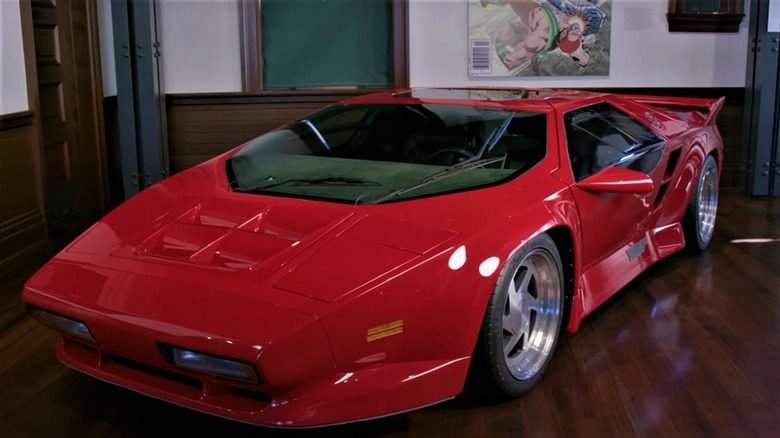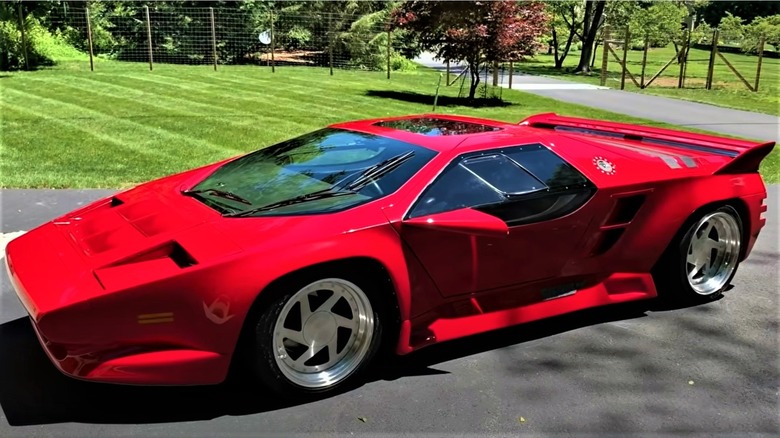Why The Vector W8 Was One Of The Most Expensive Car Flops Of All Time
The Vector W8 is a supercar with record-breaking performance, but why was it also considered among the most expensive car failures in automotive history? If you haven't heard of American automaker Vector, then you're likely not alone. Compared to established supercar makers like Lamborghini and Ferrari, Vector was an unknown newcomer when it was established in 1971 (via Motor1). However, its goal of rivaling its better-known Italian counterparts as the first American supercar was nothing short of monumental. It took seven years before Vector finally came out with its first working supercar concept, the W2.
Although the W2's wild styling garnered massive attention from the media, it wasn't exactly ready to be sold to the public market just yet. That came over a decade later, when it debuted the first prototypes of its W8 supercar in 1989. Despite competing with the legendary Lamborghini Countach, there were still big expectations from Vector's first production model. It came with luxurious amenities not found from its competitors, such as frontal air-bags, heated leather seats and a 10-disc CD changer (via Autoevolution). Given that it offered such premium comforts at a time when supercars didn't typically have any, some might be wondering: what went gone wrong?
The most expensive car fail in the making
Vector had high hopes for its supercar to outclass the competition, and even bigger promises to go along with those expectations. Powered by a twin-turbo 6.0-liter Chevy small-block V8 engine, in a chassis that's modeled after a jet fighter, no less, the W8 was primed and ready to do just that. The company claimed its W8 supercar produced 1,200 horsepower, with an alleged top speed of 242 mph, which would've made it the fastest production car of that era. The thing is, Vector used every best possible part in an attempt to become superior to other supercar makers, according to Hagerty. Of course, that came at a price: it retailed for almost $300,000, which climbed to $450,000 by 1992 (via Hagerty).
Among the most famous W8 owners was tennis star Andre Agassi, whose feedback of the car was certainly not something Vector wanted everyone to hear. Hagerty also reported that Agassi demanded a refund after claiming heat from the car's exhaust melted the trunk carpet, even going so far as to calling the W8 a "death trap." That wasn't the only negative publicity Vector received. Two W8 Turbos test driven by Car and Driver ended in failure.
Was Vector's expensive car failure doomed from the start?
Sure, the W8 undoubtedly cost a lot of money to build, but it seems like Vector was already struggling with financing its business. According company accountants, Vector founder Jerry Wiegert did not account financially for issues with the vehicles (via Los Angeles Times).
In an interview with Hagerty's Preston Lerner, Wiegert explained that his own board of directors conspired with "Indonesian gangsters," essentially putting him out of business. Following the massive car failure that is the W8, Vector went on to produce its successor, the M12. However, that proved to be another money pit, with its Indonesian investors laying its production to rest as well (via Motor Authority). While its development costs and failure to meet expectations made it one of the biggest car flops of all time, the W8 still showed how supercars can have performance, luxury, and safety. It's too bad the world wasn't ready.

